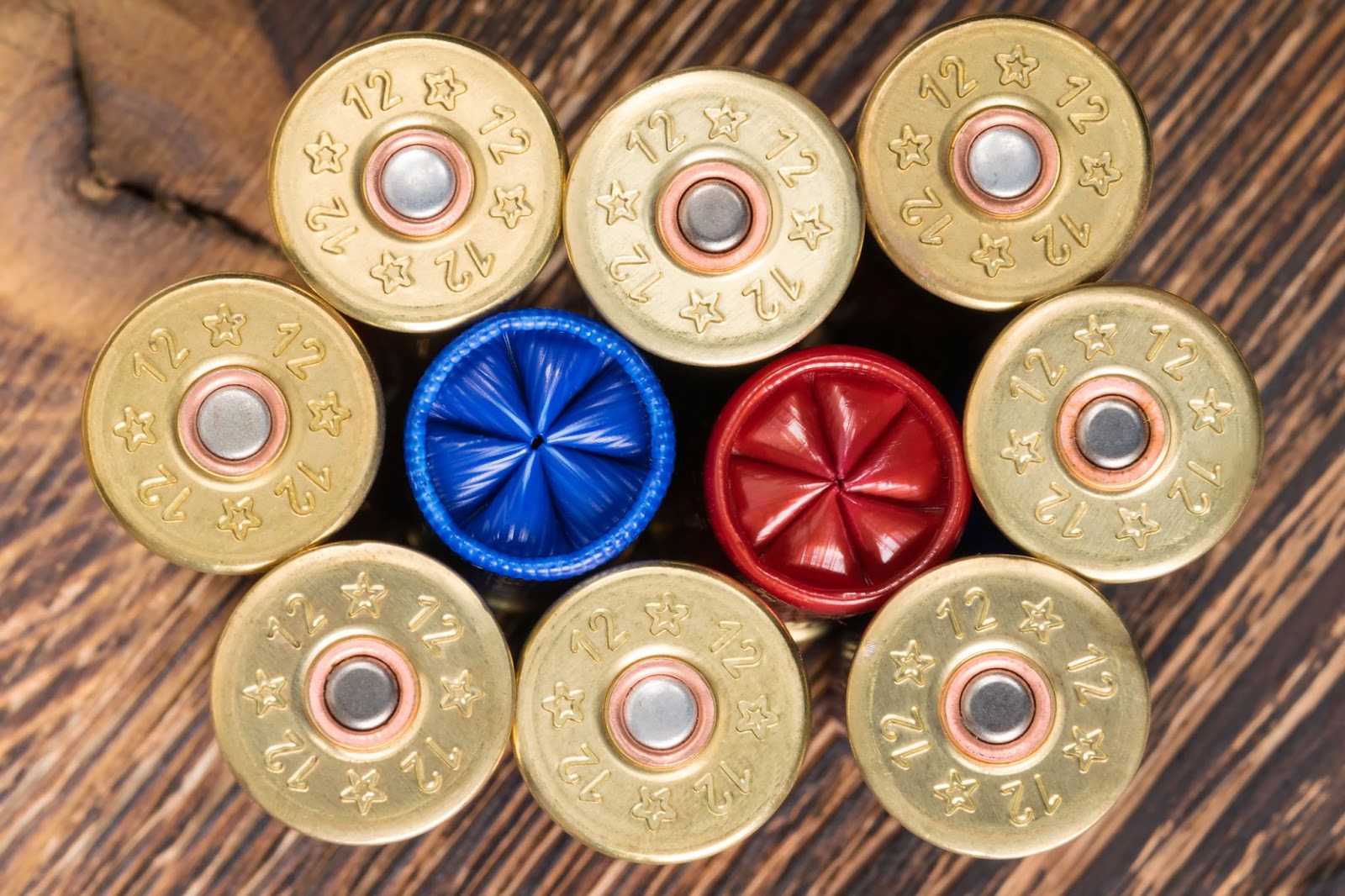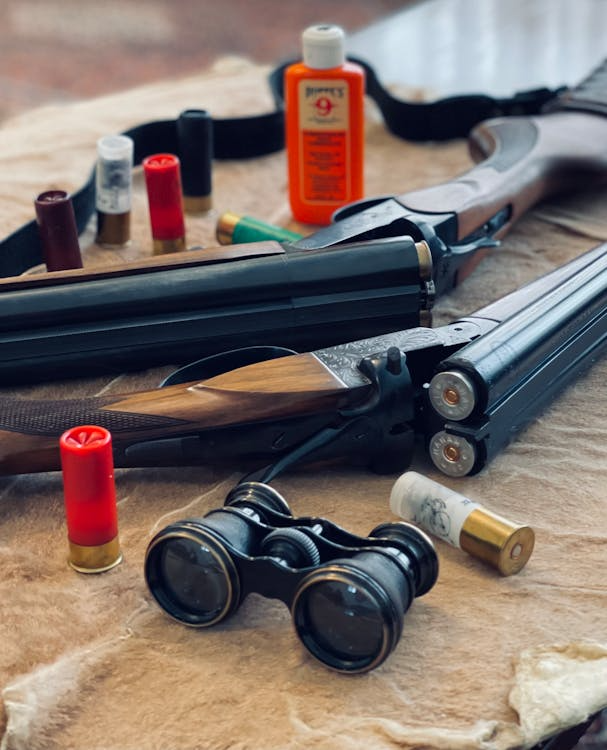
12 Gauge Ammo: Loads and Shot Size
There is no more versatile cartridge than a 12 gauge shotshell, if only for the fact that it can be loaded with so many different types of payloads, and for the volume it offers when compared to smaller alternatives like 20 gauge and .410 shells.
That being the case, let this serve as your primer to 12 gauge ammo. Here we’ll break down some of the differences associated with common 12 gauge loads.
Single Projectiles
A shotshell can be loaded with a single projectile, most commonly a slug, although this is not your only option. Here are the most common.
- Slugs: A slug is a single projectile loaded into a shell. Slugs can be either rifled or smooth, and can be fired from both smoothbore and rifled shotgun barrels. Because a slug carries so much energy, a well-placed slug can provide stopping power that could only be achieved with several loads of buckshot.
- Pumpkin balls: A pumpkin ball is a single round projectile, like a musketball. These, like slugs, produce higher stopping power than other loads. However, because they are round, they are inherently less stable, and therefore less accurate, than slugs.
- Sabots: A sabot is a round that is sub-caliber for the bore in question; strictly speaking the sabot is the sleeve that goes around the projectile to help form a gas seal in the bore, enabling smaller, lighter single projectiles to be fired.
Single projectiles are the most effective when used against medium to large game, since they carry the greatest stopping power. They are also effective at greater ranges than shot payloads.

Shot Payloads
In addition to slugs, saboted slugs and pumpkin balls, 12 gauge ammo is commonly loaded with several projectiles called shot, which is further subcategorized into both fine shot, also known as bird shot, and buckshot.
Bird Shot (Fine Shot)
Bird shot is smaller than buckshot, and since it is smaller, the payloads are measured in ounces rather than in a set number of projectiles, as is sometimes the case with buckshot.
Shot size in bird shot is denoted by number, and the higher the number, the smaller the diameter of the shot, a distinction which is very important to remember. The most common sizes of 12 gauge ammo bird shot are, with shot diameter given in parentheses:
- 9 shot (.08”): This is the finest commonly available shot size for birdshot, and is most commonly used for clay shooting. It is sometimes also used to hunt small game birds, such as quail and doves, but is inadequate for much else.
- 8 shot (.09”): Also commonly used for clay shooting, and more frequently for small game birds than 9 shot.
- 7.5 shot (.095”): This is a very common shot size for clay shooting, and not uncommon for hunting small upland game birds.
- 7 shot (.1”): Also common for clay shooting, and more common for hunting fragile upland game, including small rabbit species.
- 6 shot (.11”): Larger and heavier than 7 shot, 6 shot is also used for clay shooting but is more commonly used for hunting upland game, including quail, rabbits, and even pheasant, although most hunters prefer larger shot.
- 5 shot (.12”): This is a very versatile shot size that is heavy enough for dispatching even tough upland game, such as squirrels and pheasant.
- 4 shot (.13”): Larger and heavier than 5 shot, this is a preferred shot for pheasant, squirrel, and other tougher upland game. Also a good size for turkey hunters and small game hunters making placed shots with a full choke. This shot size also holds its power downrange, making it suitable for longer shots, especially with a tighter choke.
- 3 shot (.14”): A little larger than 4 shot, it carries energy better, and is effective for larger, tougher targets.
- 2 shot (.15”): Larger and heavier, 2 shot is popular among duck hunters chasing smaller duck species, like mallards and teal.
- 1 shot (.16”): This shot size is popular among waterfowlers in search of larger, tougher duck species.
- B (.17”): Slightly larger, size B shot is also effective among waterfowlers.
- BB (.18”): This is where the term BB comes from. This shot size is effective on larger upland game as well as for waterfowl.
- BBB (.19”): Popular on larger tougher waterfowl, like geese, as well as turkeys (where legal).
- T (.2”): Same as BBB, where legal.
- F (.22”): Effective for all small and intermediate game, at appropriate ranges, with a suitable choke, and where legal.
Buckshot
Buckshot is larger and heavier than bird shot, and so buckshot is typically measured in number of pellets rather than by weight in ounces. Like bird shot, the higher the number here the smaller the shot. The most common buckshot sizes are:
- 4 (.24”)
- 3 (.25”)
- 2 (.27”)
- 1 (.3”)
- 0 (.32”)
- 00 (.33”) Also known as double-aught or 2-aught.
- 000 (.36”) Also known as triple-aught or 3-aught.
- 0000 (.39”) Also sometimes referred to as 4-aught
All buckshot loads can be used at appropriate ranges to dispatch medium to large game, with appropriate shot placement.
Because buckshot carries more energy more effectively than fine shot, it can be effectively used (again, at appropriate ranges) for defensive applications. One advantage of buckshot is that it doesn’t necessarily produce the same risk of overpenetration that a single projectile does, and doesn’t require shot placement to be quite as precise.

Additional Notes
Regardless of the shot size you select for a given application, it is important to remember a few other factors.
One is shell length; a 3.5” 12 gauge shell can hold a higher volume of bird shot, or more buckshot pellets, than one that is 3” or 2 ¾”.
Another is shot alloy. The most common alloy is lead, but for waterfowl hunting, for instance, non-toxic shot is required by law.
Another yet is choke; a full-choked 12 gauge might be able to dispatch a coyote with 4 or 3-shot at close range, but you wouldn’t want to take the same shot at 40 yards with the same shot size.
Shop 12 Gauge Ammo Here
Here for 12 gauge ammo? Hopefully you found this article helpful in breaking down the differences between shotshell payload, shot size and selection, and if you have any questions, you can always contact us directly first.
